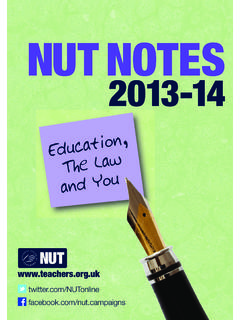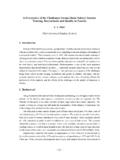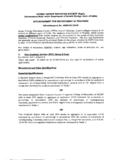Transcription of An examination of teachers’ pay
1 Incomes Data Services 23 College Hill London EC4R 2RP Telephone: 020 7429 6800 Facsimile: 020 7393 8081 E-mail: Website: An examination of teachers pay A report for the National Union of Teachers by Incomes Data Services August 2008 This report was prepared by Incomes Data Services (IDS) on behalf of the NUT. It was researched and written by: Nicola Allison Angela Bowring Jessica Evans Alastair Hatchett Incomes Data Services 23 College Hill London EC4R 2RP Telephone: 020 7429 6800 Facsimile: 020 7393 8081 E-mail: Website: Copyright Incomes Data Services 2008 Contents 1.
2 Key findings 1 2. An assessment of the current teachers; pay structure 3 Background 3 Teachers pay settlements compared with the whole economy 6 Earnings growth and pay drift 7 3. Pay and progression in teaching compared with other graduate professions 11 Graduate progression 12 Graduate progression by sector 13 4. Comparing teachers with other occupations 17 5. Graduate applications 23 IDS An examination of teachers pay, August 2008 11.
3 Key findings Reform of the pay structure for teachers was started in 2000, to aid teachers recruitment and retention. It offered higher salaries more quickly and access to a higher pay scale. This was in the context of the Government s public sector pay policy, which saw an expansion of public sector employment, initiatives on recruitment and retention, and generalised pay modernisation between 2000 and 2004, followed by what is effectively an incomes policy for the public sector from 2005, with pay increases to be kept below per cent.
4 Looking at pay settlements over the period 2002 to 2007, teachers did consistently worse than the whole economy median in every year except 2002 and 2005. The forthcoming teachers pay increase of per cent from September 2008 is significantly lower than all-items inflation (currently per cent). Similarly, the 2009 indicative pay increase for teachers of per cent which is due to take effect from 1 September 2009, is below the forecast rate of inflation of per cent. The settlements gap between teachers and the rest of the economy is not being closed by additional earnings growth.
5 Pay drift (the difference between average earnings growth and the pay settlement) was negative for teachers in 2006, and minimal in 2007, indicating that the opportunities for additional earnings growth for teachers have disappeared. Zero pay drift for teachers is also forecast for the current period. It could be argued therefore that new pay structure introduced in 2000/02 has reached its full value and will now deteriorate over time. The pay structure has gone through the cycle, with the high proportion of teachers who were previously stick at the top of the main pay scale now stuck at the top of the upper pay scale (31 per cent in 2007), leading to the low or negative pay drift.
6 Pay data from IDS research on graduates has been used to see how much teachers would be paid if they progressed at the same rates as graduate recruits in other sectors. A band D teacher at the top of the pay scale, ie after five years, received 29,427 in band D. This would be 8 per cent higher, at 31,699, if the IDS median, giving typical graduate progression over the first five years of a career, had been applied. The IDS An examination of teachers pay, August 2008 2equivalent figure for average graduate progression would be 34,709, some 18 per cent higher than the M6 figure.
7 Using average earnings figures for different occupations between 2003 and 2007, ie since the new pay structure was introduced, teachers earnings growth has been below that of chemists, biologists, mechanical engineers, electrical engineers and medical practitioners. Data on the most popular career sector for graduates show that teaching went from being outside the top five before 1999 to being the most popular choice in 2005. Since then, however, it has fallen back, to third most popular in 2008.
8 IDS An examination of teachers pay, August 2008 32. An assessment of the current teachers pay structure Background A major reform of the teachers pay structure began in 2000 with the creation of the Upper Pay Scale and the subsequent shortening of the main pay scale from nine points to six. The main aim of these changes was to set higher salaries to aid recruitment and retention, and simultaneously to give higher rewards for good teachers to stay in the classroom rather than move into management roles.
9 Initially the Upper Pay Scale (UPS) was to have five scale points and progression to the first point from the top of the main pay scale was to be strictly performance based. In reality around 180,000 teachers moved to scale point 1 on the UPS from the spring of 2001 with increases backdated to September 2000. Progression up the five-point UPS was to be discretionary and performance-based. This wholesale movement of so many teachers showed how many had been stuck on the main structure maximum salary before the UPS was created.
10 It also showed that head teachers used the new possibility of progression as a retention measure. The degree to which progression was entirely performance-based was immediately questioned. Classroom teachers pay structure from 1 September 2007 Main pay scale Band D National, pa Band C Fringe, pa Band B Outer London, pa Band A Inner London, pa M1 20,133 21,102 23,118 24,168 M2 21,726 22,692 24,501 25.












